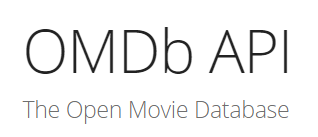Mock sample for your project: OMDb API
Integrate with "OMDb API" from omdbapi.com in no time with Mockoon's ready to use mock sample

OMDb
Version: 1
Start working with "OMDb API" right away by using this ready-to-use mock sample. API mocking can greatly speed up your application development by removing all the tedious tasks or issues: API key provisioning, account creation, unplanned downtime, etc.
It also helps reduce your dependency on third-party APIs and improves your integration tests' quality and reliability by accounting for random failures, slow response time, etc.
Description
The Open Movie Database. The OMDb API is a free web service to obtain movie information, all content and images on the site are contributed and maintained by our users.
Other APIs in the same category
Google Analytics Admin API

Cloud Key Management Service (KMS) API
Manages keys and performs cryptographic operations in a central cloud service, for direct use by other cloud resources and applications.
Container Analysis API
An implementation of the Grafeas API, which stores, and enables querying and retrieval of critical metadata about all of your software artifacts.
Service Directory API
Service Directory is a platform for discovering, publishing, and connecting services.
Secret Manager API
Stores sensitive data such as API keys, passwords, and certificates. Provides convenience while improving security.
My Business Lodging API
The My Business Lodging API enables managing lodging business information on Google.
Policy Analyzer API
OS Config API
OS management tools that can be used for patch management, patch compliance, and configuration management on VM instances.


